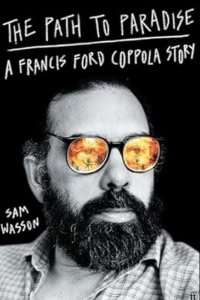Unlock the Editor’s Digest for free
Roula Khalaf, Editor of the FT, selects her favourite stories in this weekly newsletter.
Before now, writing a biography of Francis Ford Coppola has been like aiming at a moving target. Where would this unique American film achiever go next? Was he (this year) a billionaire or a bankrupt? Was he (this year) an artist-auteur or a producer-impresario? And how many Godfathers, or kindred critical-commercial smash hits, can a director have before the whistle is blown on his lifetime allowance of fairy benefactors?
Sam Wasson, author of a Bob Fosse biography and the reckonable Hollywood: The Oral History, has deftly judged the moment. Coppola at 84 is hard at work on what must surely be his last pitch for immortality, if he needs one, as cinema’s supreme multitasker. His new film Megalopolis, due next year, is a science-fiction epic on themes of vision and ambition, striving and over-reach.
Close to home? Coppola is who he is because of a staggering run of artistic and commercial success in the 1970s. In short order he made The Godfather, The Conversation, The Godfather Part II and Apocalypse Now — four canonic movies, still must-sees for moviemanes. With a breathtaking breadth of vision, he circled the tropic of topics from the rise of early Mafia potentates and later Nixon-era conspiracy politics in the US to war inferno in Vietnam.
Any other director would have settled then for being Croesus on the Pacific, rich enough to make personal projects forever. But Coppola wanted more: he wanted to help everyone else make personal projects. He also wanted to transform cinema by bringing forward the video-electronic revolution, barely yet a glint in Hollywood’s eye.

He founded his film production company American Zoetrope in 1980 — expanding an earlier independent-studio — to achieve both things. But his reach exceeded his grasp. The money was spread too thin. The films failed. Zoetrope tottered towards demise.
This wasn’t the end of the Coppola career story. He had more than a dozen films in him yet, some successful (The Outsiders, Bram Stoker’s Dracula). He remained a feted presence at world film festivals. And he won headlines with extra-directorial feats, such as co-funding Akira Kurosawa’s late masterpiece Kagemusha.
It’s almost too much for one life, never mind one book. Some of this ground has been covered before. Peter Biskind’s bestselling Easy Riders Raging Bulls had the first major word on the rise of filmmaking independents in 1970s Hollywood. Wasson’s Coppola-centric approach sidelines the larger acoustic to dig deep into one artist’s ontology. As narrative it gains by structuring the book’s first half as flashbacks from the volatile, not to say volcanic events on the Philippine locations for Apocalypse Now — a showboating, capricious Marlon Brando, a younger star (Martin Sheen) surviving a heart attack — to the director’s early and formative years. The effect is like movie cross-cutting, vivid with changing event and contrast.
Wasson is right to single Coppola out historically. He was first among equals back in that epoch shared by Robert Altman, Steven Spielberg, Terrence Malick and Martin Scorsese. He enabled and encouraged as well as executed. He even mentored and funded the young George Lucas before Lucas went ballistic with American Graffiti and Star Wars.
That Coppola saw further than others into the future of film is argued persuasively by Wasson, although we could do without the imperial purple with which he sometimes adorns his prose. “What would stop Zoetrope,” he writes, “from reconstituting America or even world consciousness into a single living, loving adventure the size of nations and the span of lifetimes . . .?” Well. Reality? The boundaries of the possible?
The boom time didn’t last for Coppola; it didn’t really outlast the 1970s. What great seers sometimes fail to see is their own best interest and potential as artists. He should have learnt from The Godfather’s success. In Hollywood, unlike auteurist Europe, box-office appeal rather than artistic depth is the main driver of creative purpose. Coppola, true to his industrial homebase, was better skilled at turning popular or pre-existing material into precious metal than at originating his own material. The single exception is The Conversation, Coppola-conceived and Coppola-scripted, where a skilful, accessible thriller plot carries powerful thoughts on politics, conspiracy and the conflicted self.
Takes one to know one? Coppola, Wasson rightly sees, was the ultimate conflicted self. He hated himself at times, loved himself at others. Riven by doubts when successful, he could be fooled by overconfidence when on course for failure. But then it’s not required of an artist that he knows himself. It’s the world he needs to know. At his best Coppola has been a great observer-chronicler of the American dream — and the American nightmare — and a masterly analyst of how each is sinisterly, inescapably symbiotic with the other.
The Path to Paradise: A Francis Ford Coppola Story by Sam Wasson Faber & Faber £20, 400 pages
Join our online book group on Facebook at FT Books Café